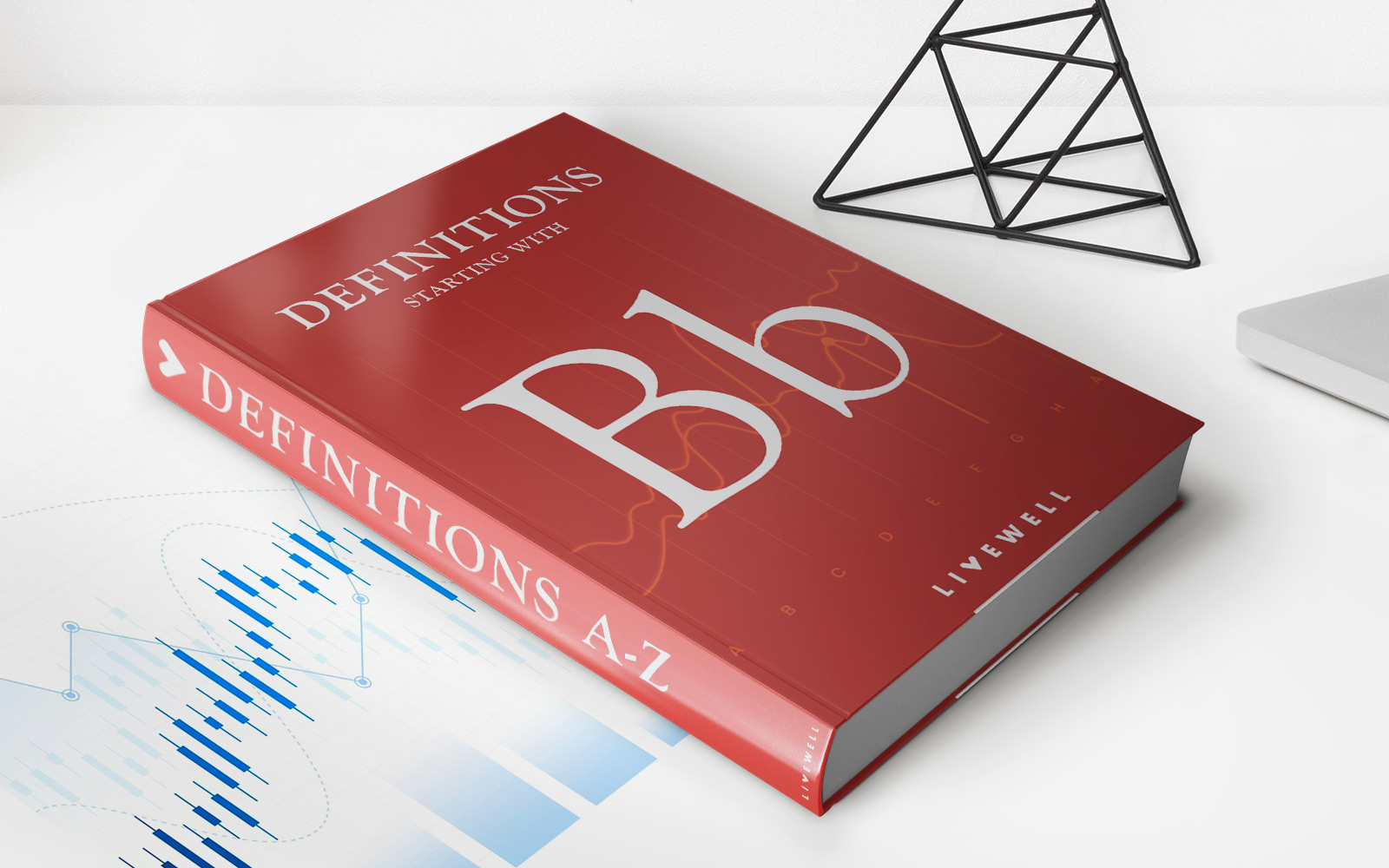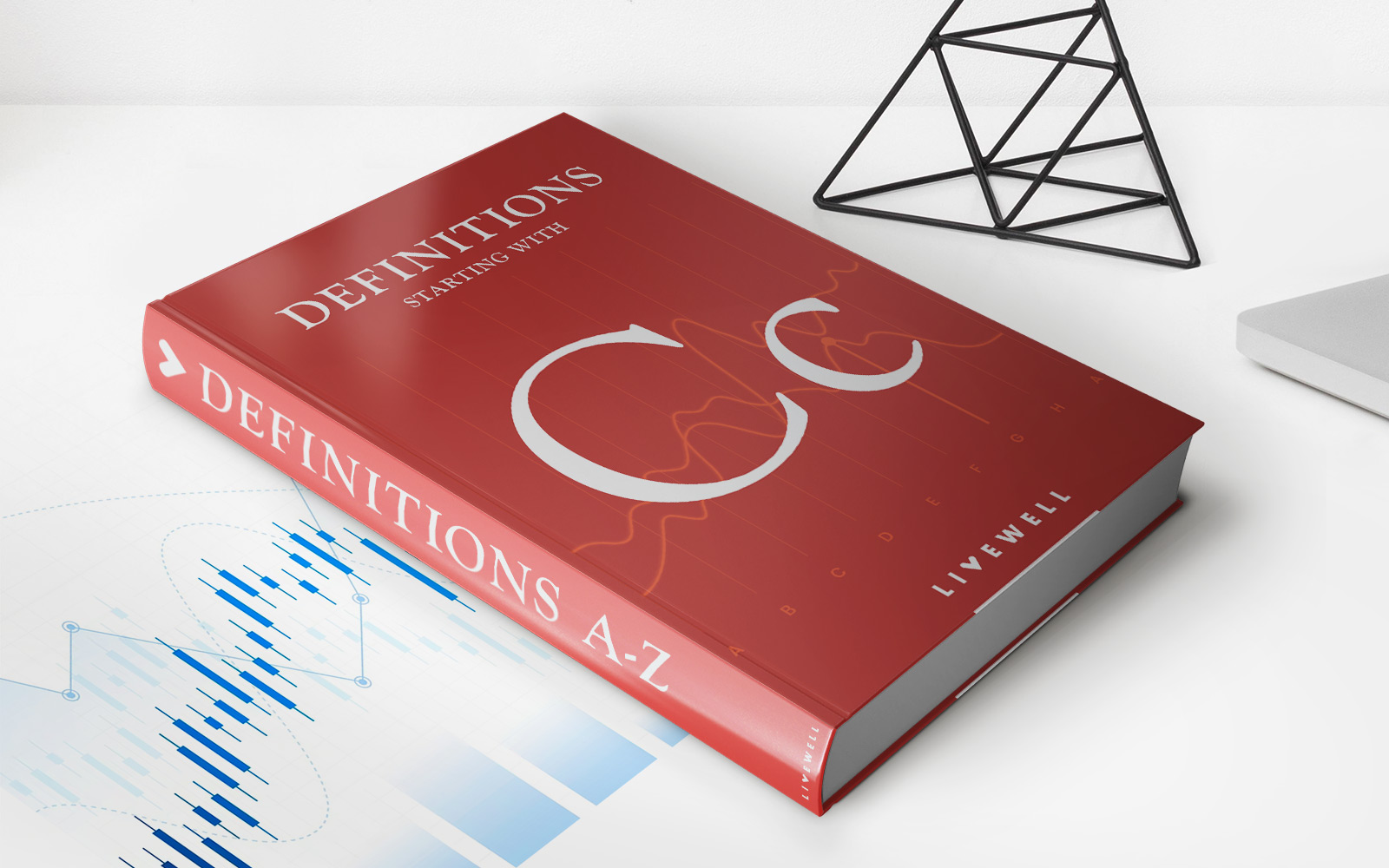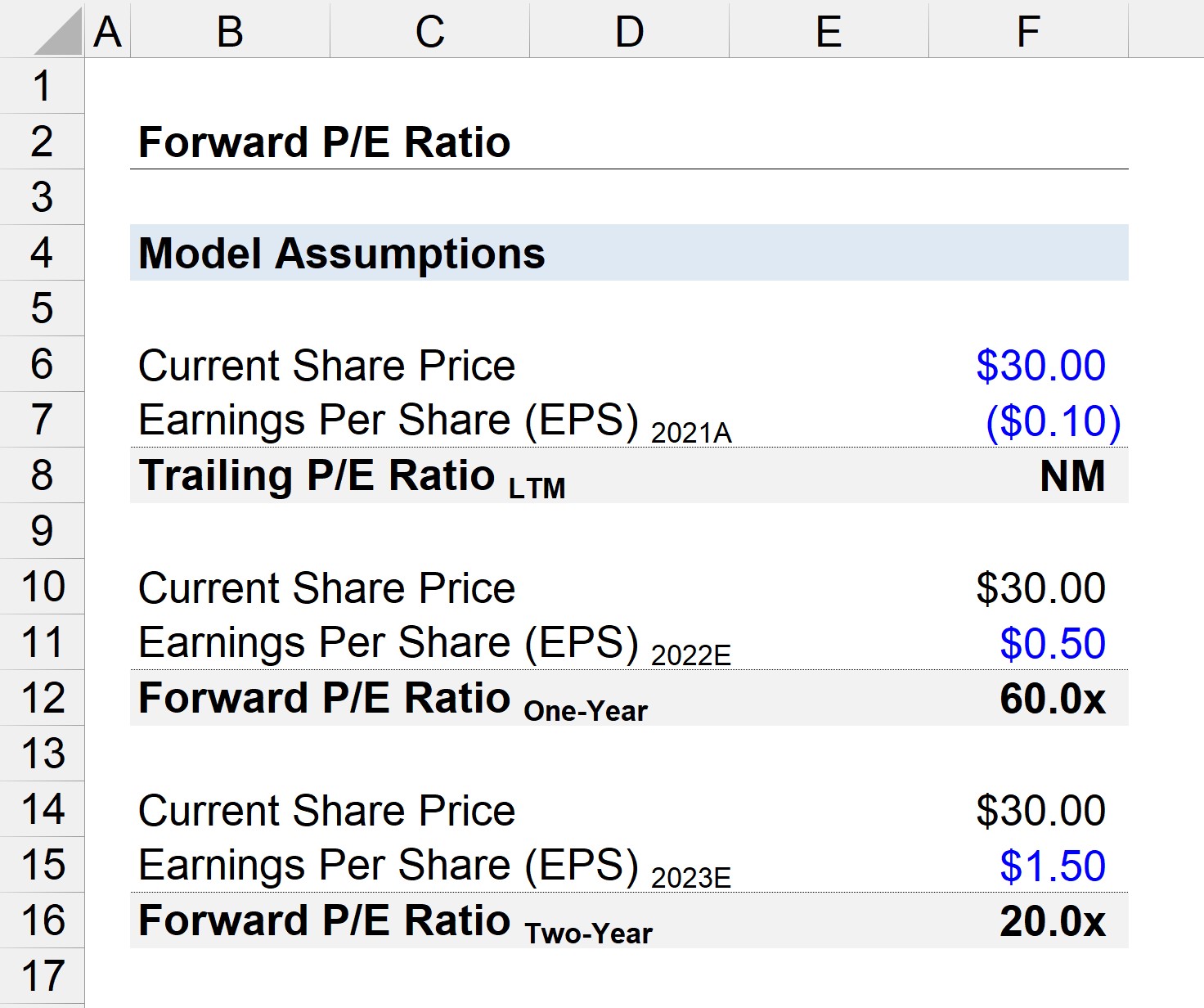

Finance
How Do Student Loans Work
Published: January 19, 2024
Understand the ins and outs of student loans and the financial implications. Expert tips and guidance on how student loans work and how to navigate the world of finance.
(Many of the links in this article redirect to a specific reviewed product. Your purchase of these products through affiliate links helps to generate commission for LiveWell, at no extra cost. Learn more)
Table of Contents
Introduction
Student loans play a pivotal role in providing financial assistance to students pursuing higher education. As the cost of education continues to rise, many students require loans to bridge the gap between their financial resources and the expenses of attending college or university. Understanding how student loans work is crucial for both students and their families in order to make informed decisions about financing their education.
Student loans are a form of financial aid that must be repaid with interest over a specified period of time. These loans are offered by the government and private lenders, and are designed to help cover tuition fees, living expenses, and other educational costs. The terms and conditions of student loans vary depending on the type of loan and the borrower’s financial situation.
In the United States, federal student loans are regulated by the Department of Education, while private student loans are issued by banks, credit unions, and other financial institutions. Federal student loans generally offer more favorable repayment options and lower interest rates compared to private loans.
It’s important to note that taking on student loan debt is a serious financial commitment that can have long-term implications. Before applying for a loan, it’s essential for students to carefully consider their future earning potential, career goals, and the affordability of their chosen educational program. By understanding the different types of student loans, the application process, and the repayment options available, students can make informed decisions to manage their debt effectively.
In this article, we will delve deeper into the various types of student loans, explore the application process, discuss repayment options, interest rates, and offer insights on managing student loan debt. We will also touch on loan forgiveness programs and private student loans. By gaining a comprehensive understanding of how student loans work, you will be better equipped to navigate the complexities of financing your education and making wise financial decisions for your future.
Types of Student Loans
When it comes to financing higher education, students have a variety of loan options to choose from. Understanding the different types of student loans available is important in order to make informed decisions about borrowing. Here are some common types of student loans:
1. Federal Student Loans: These loans are funded by the U.S. Department of Education and offer several advantages to borrowers. The two main types of federal student loans are Stafford loans and PLUS loans. Stafford loans are further divided into subsidized and unsubsidized loans. Subsidized loans are need-based, meaning the government pays the interest while the student is in school, and the interest rates are typically lower compared to unsubsidized loans. Unsubsidized loans are not need-based and interest begins accruing as soon as the loan is disbursed.
2. Perkins Loans: Perkins loans are low-interest federal loans available to undergraduate and graduate students with exceptional financial need. They are administered by colleges and universities, and the amount awarded is dependent on the student’s financial situation and the availability of funds at the institution.
3. Private Student Loans: These loans are offered by private lenders such as banks, credit unions, and online lending platforms. Private student loans can be used to cover educational expenses not fully met by federal aid. However, they typically have higher interest rates and less flexible repayment options compared to federal loans.
4. State-Based Student Loans: Many states offer their own loan programs to assist residents in financing higher education. These loans may have lower interest rates and offer additional borrower benefits for students who meet certain criteria, such as residency requirements or academic achievements.
5. Parent PLUS Loans: These federal loans are available to parents of dependent undergraduate students. They can help cover the remaining cost of education after other financial aid has been applied. The interest rates on Parent PLUS loans may be higher than other federal loan options.
6. Institutional Loans: Some colleges and universities offer loans directly to their students. These loans are generally administered by the school’s financial aid office and may have varying terms and conditions.
It’s important to carefully evaluate each loan option and compare the terms, interest rates, repayment options, and borrower benefits before making a decision. You may also consider a combination of different loan types to meet your financial needs while minimizing the overall cost of borrowing for your education.
Applying for Student Loans
Applying for student loans is a crucial step in securing the necessary funds to finance your education. The process may seem overwhelming at first, but with proper preparation and guidance, it can be manageable. Here are the key steps involved in applying for student loans:
1. Complete the Free Application for Federal Student Aid (FAFSA): The FAFSA is a form that determines your eligibility for federal student aid, including grants, work-study, and loans. It collects information about your financial situation, such as income, assets, and household size. Be sure to fill out the FAFSA accurately and submit it as soon as possible, as some aid programs have limited funding and are awarded on a first-come, first-served basis.
2. Explore Scholarship and Grant Opportunities: Before taking out student loans, explore scholarships and grants for which you may be eligible. These types of financial aid do not need to be repaid and can significantly reduce your need for loans. Research and apply for scholarships through online databases, your school’s financial aid office, or local organizations.
3. Understand Loan Options: Familiarize yourself with the various loan options available to you, such as federal student loans, private loans, or state-based loans. Consider factors such as interest rates, repayment terms, and borrower benefits. It’s generally recommended to exhaust federal loan options before turning to private loans, as federal loans typically offer more favorable terms and protections.
4. Gather Required Documents: Loan applications may require supporting documents such as tax returns, bank statements, and proof of enrollment. It’s important to gather these documents in advance to streamline the application process.
5. Research Loan Repayment Options: While applying for student loans, it’s crucial to understand the repayment options available to you. Federal loans offer various repayment plans, including income-driven repayment plans that base your monthly payment on your income and family size. Private loans may have fewer repayment options, so it’s important to consider the flexibility of repayment terms before borrowing.
6. Compare Loan Offers: If you are considering private loans, compare offers from different lenders to find the best interest rates and repayment terms. Be cautious of any variable interest rates that may increase over time and affect your monthly payments.
7. Complete the Loan Application: Once you have chosen the loan(s) you wish to pursue, complete the loan application(s) thoroughly and accurately. Provide all the required information, including personal details, financial information, and the loan amount you are requesting.
Remember, borrowing for your education is a significant financial responsibility. Before submitting loan applications, carefully consider the amount you truly need and the potential impact on your future finances. It’s advisable to borrow only what is necessary and to create a budget to manage your expenses during your studies. Seeking guidance from the financial aid office at your educational institution can also be beneficial in navigating the loan application process.
Disbursement of Funds
After successfully applying for student loans, the next step is the disbursement of funds. Disbursement refers to the process of transferring the loan proceeds from the lender to the borrower’s school. Here’s what you need to know about the disbursement of student loan funds:
1. School Certification: Before loan funds can be disbursed, your school must certify your enrollment status and eligibility for the loan. This involves confirming your attendance, verifying the amount of aid you are eligible to receive, and ensuring that you meet the necessary requirements.
2. Timing of Disbursements: Disbursement of federal student loans typically occurs directly to the school. The timing may vary depending on your school’s policies and academic calendar. In most cases, the funds are disbursed in two or more equal installments over the course of the academic year. However, some schools may have different disbursement schedules, so it’s important to consult with your school’s financial aid office for specific information.
3. Applying Loan Funds to Educational Expenses: Once the loan funds are disbursed to your school, they will first be applied to cover your tuition and fees. If there are remaining funds after tuition is paid, they can be used for other educational expenses, such as textbooks, housing, and transportation. However, it’s important to note that you should only borrow what is necessary to cover your educational costs, as any excess funds can lead to unnecessary debt.
4. Refunds: If there are leftover loan funds after your educational expenses have been covered, your school will typically issue a refund. This refund can be used for additional educational costs or for personal expenses. However, it’s important to use these funds wisely, as they are part of your loan and must be repaid with interest.
5. Disbursement Methods: The disbursement of funds can be done through various methods, including direct deposit into your bank account, a paper check, or a prepaid debit card. Your school’s financial aid office will provide information about the available options and how to choose your preferred method.
It’s important to keep in mind that the disbursement of loan funds does not mean that you have to immediately begin repaying your loans. Repayment typically begins after you graduate, leave school, or drop below half-time enrollment. During your time in school, it’s crucial to focus on your studies and manage your finances responsibly to minimize the impact of student loan debt in the future.
If you have any questions or concerns regarding the disbursement of your student loan funds, be sure to reach out to your school’s financial aid office. They can provide guidance and assist you in understanding the disbursement process specific to your school and loan program.
Repayment Options
After completing your education or dropping below half-time enrollment, it’s time to start repaying your student loans. Understanding the various repayment options available to you is essential in effectively managing your loan debt. Here are some common repayment options for student loans:
1. Standard Repayment Plan: This is the most common repayment plan, and it involves fixed monthly payments over a period of 10 years. The monthly payments are calculated based on the total loan balance and the interest rate. This plan allows you to pay off your loan within a reasonable timeframe while minimizing the overall interest paid.
2. Graduated Repayment Plan: With this plan, your monthly payments start lower and gradually increase over time, usually every two years. This can be beneficial if you anticipate increasing income as you progress in your career. However, keep in mind that you may end up paying more in interest over the life of the loan compared to the standard repayment plan.
3. Income-Driven Repayment Plans: Income-driven repayment plans, such as Income-Based Repayment (IBR), Pay As You Earn (PAYE), and Revised Pay As You Earn (REPAYE), base your monthly payments on your income and family size. These plans often result in lower monthly payments but can extend the repayment period beyond the standard 10 years. After a certain period (usually 20 or 25 years), any remaining loan balance may be forgiven, although the forgiven amount may be considered taxable income.
4. Extended Repayment Plan: This plan extends the repayment period beyond the standard 10 years, allowing you to have lower monthly payments. Under this plan, you can choose between fixed or graduated payments. However, keep in mind that you may end up paying more in interest over the life of the loan.
5. Loan Consolidation: Consolidation allows you to combine multiple federal student loans into a single loan, resulting in one monthly payment. This can simplify repayment and potentially extend the repayment period, resulting in lower monthly payments. However, it’s important to note that consolidating loans may lead to paying more in interest over time.
6. Loan Forgiveness and Discharge: There are several loan forgiveness programs available for certain professions, such as Public Service Loan Forgiveness (PSLF) for individuals working in qualifying public service jobs. Additionally, loan discharge may be possible under specific circumstances, such as total and permanent disability or the closure of your school.
It’s crucial to carefully evaluate your financial situation and consider the pros and cons of each repayment option before making a decision. Some borrowers may find it beneficial to switch repayment plans as their financial circumstances change over time. If you’re having trouble making your monthly payments, contact your loan servicer to explore options such as deferment, forbearance, or income-driven repayment plans.
Remember, timely repayment is essential to maintain a good credit history and to avoid penalties or defaulting on your loans. By staying informed and proactively managing your loan repayment, you can effectively navigate the process and work towards becoming debt-free.
Interest Rates
Interest rates play a significant role in the cost of borrowing for student loans. Understanding how interest rates are determined and the impact they have on loan repayment is crucial when managing your student loan debt. Here’s what you need to know about student loan interest rates:
1. Federal Student Loan Interest Rates: The interest rates on federal student loans are set by Congress and are fixed for the life of the loan. The rates may vary depending on the type of loan and when it was disbursed. For example, for loans disbursed between July 1, 2021, and July 1, 2022, the interest rate for undergraduate Direct Subsidized and Unsubsidized loans is 3.73%, while the rate for graduate and professional Direct Unsubsidized loans is 5.28%. Parent PLUS loans have an interest rate of 6.28%.
2. Private Student Loan Interest Rates: Private student loan interest rates are determined by the lender and can vary significantly. The rates are influenced by factors such as the borrower’s credit history, the lender’s policies, and the overall market conditions. Typically, borrowers with better credit scores and a strong financial profile may qualify for lower interest rates. It’s important to compare rates from different lenders to get the most favorable terms.
3. Fixed vs. Variable Interest Rates: Student loans may have either fixed or variable interest rates. With a fixed interest rate, the rate remains the same for the entire repayment period, providing stability and predictability in monthly payments. On the other hand, variable interest rates may change over time based on market conditions, potentially resulting in fluctuating monthly payments.
4. Capitalization of Interest: The accrual of interest on student loans can significantly impact the total amount repaid. When interest capitalizes, it is added to the loan’s principal balance, and future interest is calculated based on the higher balance. This can increase the overall cost of borrowing. Understanding the frequency and timing of interest capitalization is important in managing the overall interest cost.
5. Interest Subsidies: Some federal loans, such as Direct Subsidized Loans, offer interest subsidies. For these loans, the government pays the interest while the borrower is in school, during the grace period, and during certain deferment periods. This can save borrowers money over the life of the loan.
When comparing loan options, it’s crucial to pay close attention to the interest rates. A higher interest rate results in a higher monthly payment and a greater overall cost of borrowing. Consider factors such as the interest rate, repayment term, and borrower benefits when evaluating loan offers.
It’s important to note that making extra payments towards the principal balance of your loan can help reduce the total interest paid over time. By paying more than the required minimum monthly payment, you can save money and shorten the repayment period.
Stay informed about your student loan interest rates and explore strategies to minimize the overall cost of borrowing. Regularly review your loan statements and consult with your loan servicer if you have any questions or concerns regarding your interest rates or repayment options.
Managing Student Loan Debt
Managing student loan debt effectively is crucial for maintaining financial stability and achieving long-term financial goals. Here are some tips to help you manage your student loan debt:
1. Create a Budget: Start by creating a monthly budget that includes all of your income and expenses. Factor in your student loan payments and prioritize them in your budget. This will help you allocate your funds wisely and ensure that you can make your loan payments on time.
2. Explore Repayment Options: If you’re struggling to make your monthly payments, consider exploring different repayment options. Federal loans offer income-driven repayment plans that base your payments on your income and family size. This can help make your payments more manageable, especially during times of financial hardship.
3. Make Extra Payments: If possible, consider making extra payments towards your student loans. By paying more than the minimum required amount, you can reduce the overall interest accrued and pay off your loans faster. Before making extra payments, check with your loan servicer to ensure that the additional amount is applied towards the principal balance.
4. Explore Loan Forgiveness Programs: Investigate loan forgiveness programs for which you may be eligible. Public Service Loan Forgiveness (PSLF) is available to borrowers working in qualifying public service jobs, and Teacher Loan Forgiveness is designed for teachers in certain low-income schools. These programs can significantly reduce or eliminate your remaining loan balance after meeting specific requirements.
5. Seek Financial Assistance: If you’re struggling to make your monthly payments, don’t hesitate to reach out to your loan servicer or financial aid office for assistance. They can provide guidance on available options such as deferment, forbearance, or loan consolidation. Avoid defaulting on your loans by seeking help before falling behind on payments.
6. Prioritize High-Interest Loans: If you have multiple student loans, consider prioritizing your payments towards the loans with the highest interest rates. By focusing on these loans first, you can minimize the overall interest paid over time and potentially pay off your loans faster.
7. Stay Informed and Updated: Regularly review your loan statements and stay informed about any changes to your loan terms or repayment options. Keep your contact information updated with your loan servicer to ensure that you receive important communications regarding your loans.
8. Manage Other Debts Wisely: Student loans may not be your only financial obligation. It’s important to manage other debts, such as credit card debt or car loans, responsibly. Prioritize your high-interest debts and develop a repayment strategy to minimize the overall debt burden and improve your financial situation.
Remember, managing student loan debt takes time and effort. Stay committed to making your payments on time, explore repayment options, and seek assistance when needed. With proper financial planning and disciplined repayment strategies, you can successfully manage your student loan debt and work towards a brighter financial future.
Loan Forgiveness Programs
Loan forgiveness programs can provide significant relief for borrowers struggling to repay their student loans. These programs offer the opportunity to have a portion or the entire loan balance forgiven, alleviating the burden of debt. Here are some common loan forgiveness programs:
1. Public Service Loan Forgiveness (PSLF): The PSLF program is available to borrowers who work full-time for a qualifying public service organization, such as government agencies, non-profit organizations, or certain public schools. After making 120 qualifying payments (10 years) while working for an eligible employer, the remaining loan balance may be forgiven tax-free.
2. Teacher Loan Forgiveness: This program is specifically designed for teachers who work in low-income schools or educational service agencies. Depending on the subject area and qualifications, teachers can be eligible for loan forgiveness of up to $17,500 on their Direct Subsidized and Unsubsidized loans or their Subsidized and Unsubsidized Federal Stafford loans.
3. Income-Driven Repayment Plan Forgiveness: Income-driven repayment plans, such as Income-Based Repayment (IBR), Pay As You Earn (PAYE), and Revised Pay As You Earn (REPAYE), can offer loan forgiveness at the end of the repayment term. The remaining loan balance is forgiven after making qualifying payments for 20 or 25 years, depending on the specific plan.
4. Perkins Loan Cancellation: Borrowers with Perkins loans may be eligible for loan cancellation through various programs. These programs include cancellation for teachers, military personnel, healthcare professionals, and volunteers in Peace Corps or AmeriCorps.
5. State-Specific Loan Forgiveness Programs: Some states offer loan forgiveness programs to incentivize graduates to work in high-demand fields or underserved areas. These programs vary from state to state and may be available to teachers, healthcare professionals, lawyers, and other professionals.
6. Loan Forgiveness for Military Personnel: Military service members may qualify for loan forgiveness programs such as the Military College Loan Repayment Program (CLRP) or the Public Service Loan Forgiveness for Military Service Members. These programs can provide partial or full loan forgiveness in exchange for military service.
It’s important to note that loan forgiveness programs have specific eligibility requirements and may have limitations on the types of loans and repayment plans that qualify. It’s crucial to carefully review the requirements and follow the necessary steps to ensure eligibility for loan forgiveness.
Remember to stay informed about the specific conditions and requirements of each forgiveness program. Regularly monitor your progress towards forgiveness and submit any necessary documentation to ensure that you receive the maximum benefits available to you.
Loan forgiveness is an excellent opportunity to reduce the financial burden of student loan debt. By taking advantage of these programs, borrowers can achieve greater financial freedom and focus on other important life goals.
Private Student Loans
While federal student loans are often the first choice for financing higher education, they may not always cover the full cost of tuition and expenses. In such cases, private student loans can be used to bridge the financial gap. Here’s what you need to know about private student loans:
1. Lenders and Terms: Private student loans are offered by banks, credit unions, and online lenders. Each lender sets its own terms and conditions, including interest rates, repayment terms, and borrower benefits. It’s essential to compare offers from multiple lenders to find the most favorable terms and lowest interest rates.
2. Eligibility: Private student loans typically require a credit check, and some lenders may require a co-signer if the borrower has limited or no credit history. Meeting the lender’s creditworthiness criteria is crucial to securing a private student loan. However, some lenders offer programs specifically designed for undergraduate students who may not have established credit.
3. Interest Rates: Private student loans often have variable interest rates, meaning they can fluctuate over time. Fixed interest rate options may also be available, allowing borrowers to lock in a specific rate for the life of the loan. It’s important to carefully consider the interest rates offered by different lenders and understand how they can affect your monthly payments and the total cost of borrowing.
4. Repayment Options: Private student loans may have less flexible repayment options compared to federal loans. However, some lenders offer borrower benefits such as interest rate reductions for automatic payments or loyalty rewards for on-time payments. Review the repayment options and additional benefits offered by each lender to determine the best fit for your financial situation.
5. Cosigner Release: Many private lenders offer cosigner release options, allowing borrowers to remove a cosigner from the loan after meeting specific criteria. This can be beneficial for both the borrower and the cosigner.
6. Additional Fees: Private student loans may include origination fees, late payment fees, or prepayment penalties. It’s important to understand all the associated fees and factor them into your loan cost calculations.
7. Exhaust Federal Loan Options First: Before considering private student loans, it’s generally advisable to exhaust your eligibility for federal student loans. Federal loans typically offer more favorable terms, such as lower fixed interest rates and flexible repayment options.
Remember to carefully consider your financial needs and compare the terms and benefits offered by different lenders. Read and understand the terms of the loan agreement before signing, and only borrow what is necessary to cover your educational expenses.
If you encounter difficulties repaying private student loans, contact your lender as soon as possible to discuss repayment options. They may offer temporary forbearance or other assistance to help you manage your loan payments.
It’s crucial to approach private student loans with caution and fully understand the terms and obligations. Careful planning and diligent repayment can help you successfully manage your private student loan debt while pursuing your educational goals.
Conclusion
Understanding how student loans work is essential for anyone seeking to finance their higher education. From the various types of loans available to the application process, disbursement of funds, repayment options, interest rates, and loan forgiveness programs, there are many important factors to consider.
Federal student loans offer favorable terms, including fixed interest rates, income-driven repayment plans, and potential loan forgiveness. Exploring these options should be the first priority for students looking for financial assistance. However, private student loans can fill the gap when federal loans are insufficient, providing additional funding for educational expenses.
Managing student loan debt requires careful planning and responsible financial practices. Creating a budget, exploring repayment options, making extra payments when possible, and exploring loan forgiveness programs are key strategies to effectively manage student loans. It’s also important to stay informed about changes in loan terms, explore opportunities for refinancing or consolidation, and seek assistance when necessary.
Remember, student loans are a long-term financial commitment, and it’s crucial to borrow responsibly and only what is necessary for your education. Carefully consider the potential impact of loan repayment on your future finances and explore alternative funding options such as scholarships and grants.
By being proactive and informed about student loan processes and options, you can make sound financial decisions that minimize the overall cost of borrowing and pave the way for a successful and debt-free future.
Keep in mind that while the information provided here offers a comprehensive overview of student loans, it’s important to consult with a financial advisor or the financial aid office at your educational institution for personalized guidance that fits your individual circumstances.
As you embark on your educational journey, may you navigate the world of student loans with confidence and emerge with the knowledge and skills necessary to achieve your dreams.














